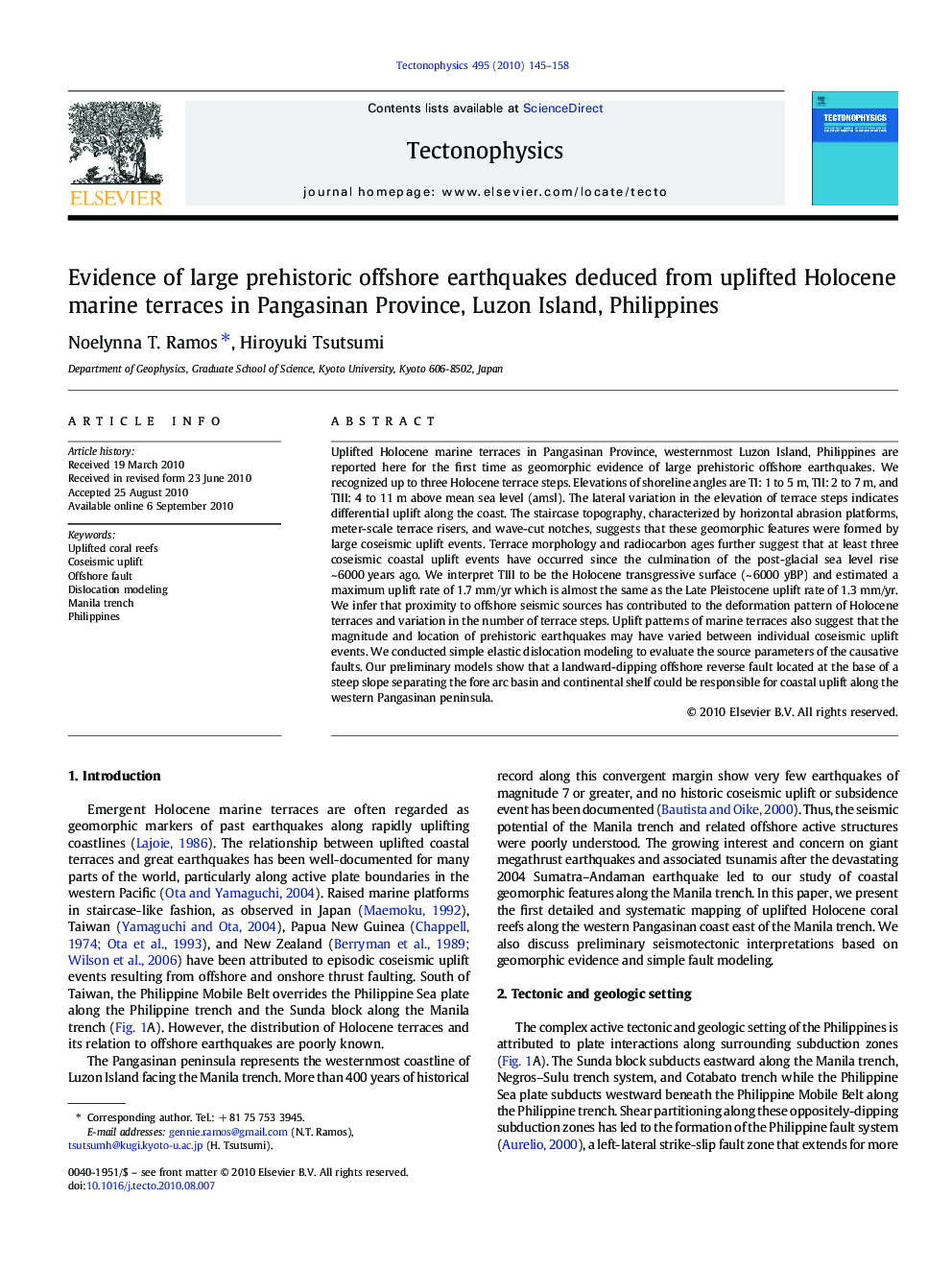| Article ID | Journal | Published Year | Pages | File Type |
|---|---|---|---|---|
| 4693289 | Tectonophysics | 2010 | 14 Pages |
Uplifted Holocene marine terraces in Pangasinan Province, westernmost Luzon Island, Philippines are reported here for the first time as geomorphic evidence of large prehistoric offshore earthquakes. We recognized up to three Holocene terrace steps. Elevations of shoreline angles are TI: 1 to 5 m, TII: 2 to 7 m, and TIII: 4 to 11 m above mean sea level (amsl). The lateral variation in the elevation of terrace steps indicates differential uplift along the coast. The staircase topography, characterized by horizontal abrasion platforms, meter-scale terrace risers, and wave-cut notches, suggests that these geomorphic features were formed by large coseismic uplift events. Terrace morphology and radiocarbon ages further suggest that at least three coseismic coastal uplift events have occurred since the culmination of the post-glacial sea level rise ~ 6000 years ago. We interpret TIII to be the Holocene transgressive surface (~ 6000 yBP) and estimated a maximum uplift rate of 1.7 mm/yr which is almost the same as the Late Pleistocene uplift rate of 1.3 mm/yr. We infer that proximity to offshore seismic sources has contributed to the deformation pattern of Holocene terraces and variation in the number of terrace steps. Uplift patterns of marine terraces also suggest that the magnitude and location of prehistoric earthquakes may have varied between individual coseismic uplift events. We conducted simple elastic dislocation modeling to evaluate the source parameters of the causative faults. Our preliminary models show that a landward-dipping offshore reverse fault located at the base of a steep slope separating the fore arc basin and continental shelf could be responsible for coastal uplift along the western Pangasinan peninsula.
Research Highlights► The study attempts to evaluate the seismic potential of the Manila trench. ► Holocene marine terraces were mapped in western Pangasinan. ► Holocene marine terraces were formed by large prehistoric coseismic uplift events. ► Offshore intraplate reverse faults are likely responsible for coseismic uplift. ► Results have important implications to seismic hazard mitigation.
